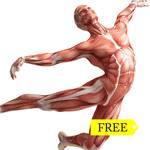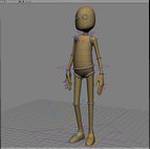Looks interesting!
cmiVFX Releases Autodesk Softimage - The Principles Of Animation
High Definition Training Videos for the Visual Effects Industry
Princeton, NJ (August 8th, 2011) – cmiVFX launches its latest training video for the Autodesk Softimage Animation Package. This video is geared to train everyone and anyone in the Computer Graphics and Visual Effects industries. The principles of animation are static rules that have worked since the beginning of the invention of movement itself. If your an artist that even questions if they know these principles completely, then this video is for you, even if you do not use Softimage as your tool of choice. This video is extremely agnostic to any particular features, but makes great use of the tools Softimage has become famous for.
Introduction
Talk about a film studio in a box! When you look back at the list of amazing projects that Softimage has been a part of, you can't help but feel that you have at your fingertips, some of the most amazing and powerful set of animation and effects tools in the market today. No wonder so many animation and VFX houses have made Softimage a core of their pipelines. We will take a moment to step on the shoulders of giants and use the "principles of animation" in a practical way. We will explore some of the basic tools and animate the human form, and even little woodland creatures.
Demo Video
http://vimeo.com/27433648
Here at cmiVFX we maintain a current training library for the latest versions of popular software titles. When it comes to high end CG and VFX training, there is only once choice... cmiVFX!
Don’t forget about the cmiSubscription plan! Get one today. cmiVFX launched the most affordable subscription plan in Visual FX Training History for only $299 USD, and if you were a subscriber, this New Training Release would already be in your account. This video is also available a-la-cart in our brand new HTML5 player system.
||||||||||||||||||||| Softimage - Principles Of Animation ||||||||||||||||||||||
http://store.cmivfx.com/tutorials/view/ ... Principles
Strong Poses
From superhero poses to subtle elegant moments frozen in time, understanding the human form in space is one of the cornerstones of animation. With a special thanks to the explorations by Keith Lango, we explore these poses using some very powerful rigging systems in Softimage. The user will see how easy it is to examine the subtle and powerful aspects of the human form, and compose it in dimensional space.
Timing
Strong poses with great timing makes up 90 percent of great animation. We will be using the technique of pose-to-pose animation while getting familiar with the Animation Editor and Dope Sheet. Follow along as we set our poses, then move the keys to adjust the timing, blocking out the action quickly and efficiently.
Anticipation
Here's the windup, and there's the pitch! We'll talk about the windup, or anticipation in this chapter. Before the action can start, there is a moment of preparation. This serves to create a realistic feeling of power, and as a storytelling device, as it prepare the audience for the action itself.
Arcs
We will begin working in layers, tweaking and refining the motion we have created, using Softimage's "plot to curve" tool to analyze motion paths through space. We will make sure the arcs are strong and natural, and that they show the proper speed and acceleration.
Squash and Stretch
We will use the "bouncing ball" scene, a favorite of almost every animator working in the industry, to explore squash and stretch. We will also integrate this concept into the human body using some of the powerful rigs available in Softimage.
Line of Action
As we move deeper into some of the more subtle tweaks, we can use the principles of Strong Poses and Arcs, and begin to study "Line of Action". Professional animators talk about "animating the action, not the object". Line of action allows us to practice this principle, and we can practice using a squirrel, whose very movement illustrates this principle nicely.
Ease-In Ease-Out
We will look more deeply into the Animation Editor, and use it to illustrate the concept of acceleration and deceleration, or "Ease-In and Ease-Out", the interpolation of motion between the keys.
Breaking Joints
The keys we create in pose-to-pose animation seem very mechanical and robotic without some much needed attention. We will offset some of the motion keys to add some naturalism. Human motion and movement in nature follow a flow, delaying a little bit from the center of the body through the limbs, or the tip of the tail.
Mass and Scale
No discussion about animation would be complete without talking about mass and scale. We will use our principles of timing and poses to create the illusion of light and heavy, youth and age, and gender differences. We will also go through some techniques to show how to lift heavy and light objects and the differences it has on the body.
Secondary Motion - Overshoot
The final principle is generally handled at the end of the animation process, but is no less important. Overshoot and Secondary Motion is the principle that nothing in nature comes to a dead stop. There is almost always a slight "bounce". at the end of a motion. We will also cover some of the amazing ICE Syflex tools in Softimage to simulate cloth.
Christopher Tedin
Born in Sitka, Alaska, Chris started his career as a painter and sculptor. He has been working as an illustrator, graphic designer, and most recently as an art director in Chicago, Illinois. He has been teaching game design and animation for over 15 years. His students now work as animators and professional game designers at Blue Sky Studios, Digital Domain, Aardman/Sony, Microsoft, and as freelance independent artists. Many of his students are now college teachers themselves. He started in the early days with Strata StudioPro, then 3ds Max version 1.0, Maya 2.0, Softimage 3.8, Houdini, before finally settling on Softimage XSI, beginning with version 4.0 Foundation. Chris still sculpts and paints and teaches part time at Tribeca/Flashpoint Academy in Chicago.
Project Contents
All cmiVFX videos come with all the training materials you can need right from our website. No matter what time of day, your location, or how your feeling, cmiVFX will be there waiting for you!
This video is available today at the cmiVFX Store: http://store.cmivfx.com/
About cmiVFX
cmiVFX is the leader in High Definition Video Training for the Visual Effects Community. Register for FREE and receive hours of FREE content at the cmiVFX Video-on-Demand Player. ( http://store.cmivfx.com/login ) For additional information about cmiVFX, visit http://www.cmivfx.com. © 2010 cmiVFX | cmiStudios. All rights reserved.

































































